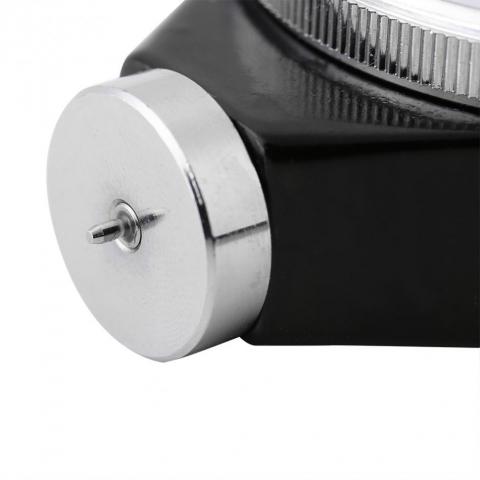This user has no status.
This user has no status.
Well-Known Member
The TT manufacturers ratings on their rubber hardness or softness are bogus.
The TT manufacturers usually have only one rating and that is a durometer value from an arbitrary scale.
First, a 2.2 mm rubber is softer than an 1.8mm when the rubbers are made of the same sponge material. The Paddle Palace rubber ratings usually have one rating for all three thickness. Think of a rubber as being made up of layers of 0.2mm sheets. The 1.8mm rubber would be made of 9 sheets and the 2.2 mm rubber would be made of 11 sheets.
Now suppose a 10 N force makes each sheet compress by 5%. Then each sheet would compress by 0.01mm so the 1.8mm rubber would compress 0.09mm and the 2.2mm shet would compress by 0.11 mm. The top sheet will affect these numbers a bit because the top sheet looks like another spring in series.
Two, the durometer readings are not realistic. There is no way a pointy device sticking into rubber resembles a TT ball. How could one use a durometer reading in a calculation. Durometer readings don't even have units!!! A durometer reading doesn't provide any indication of how fast or spinny the rubber is.
A spring constant would be much better.
The TT manufacturers usually have only one rating and that is a durometer value from an arbitrary scale.
First, a 2.2 mm rubber is softer than an 1.8mm when the rubbers are made of the same sponge material. The Paddle Palace rubber ratings usually have one rating for all three thickness. Think of a rubber as being made up of layers of 0.2mm sheets. The 1.8mm rubber would be made of 9 sheets and the 2.2 mm rubber would be made of 11 sheets.
Now suppose a 10 N force makes each sheet compress by 5%. Then each sheet would compress by 0.01mm so the 1.8mm rubber would compress 0.09mm and the 2.2mm shet would compress by 0.11 mm. The top sheet will affect these numbers a bit because the top sheet looks like another spring in series.
Two, the durometer readings are not realistic. There is no way a pointy device sticking into rubber resembles a TT ball. How could one use a durometer reading in a calculation. Durometer readings don't even have units!!! A durometer reading doesn't provide any indication of how fast or spinny the rubber is.
A spring constant would be much better.













